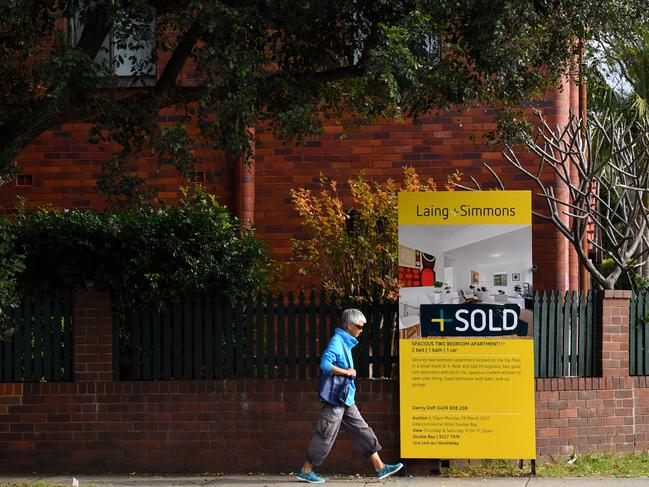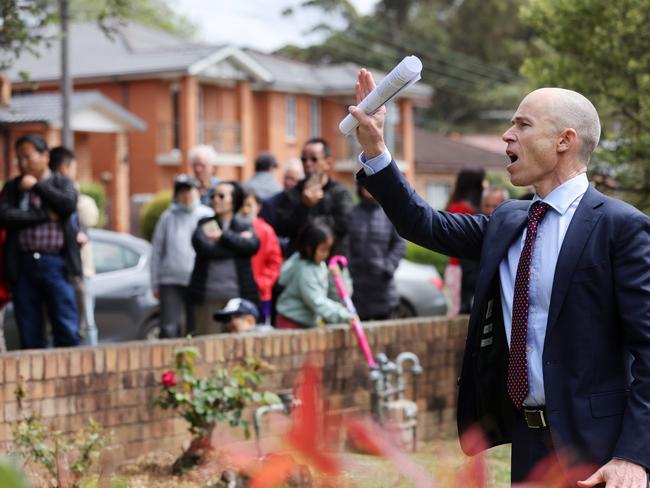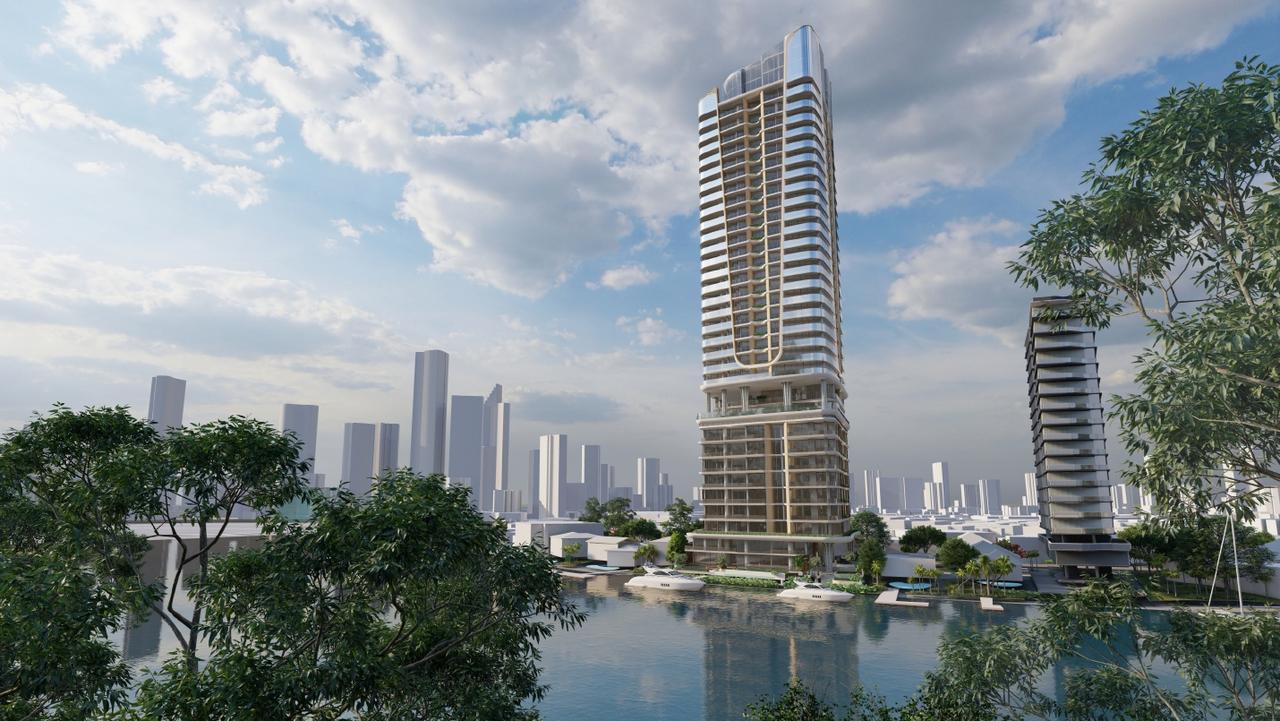Real estate Sydney: ’Hollow’ selling season hits industry hard, success of first homebuyer schemes
A poor spring selling season and uncertainty over further rate rises is having a domino effect across the wider economy, which could signal a looming recession.

Property
Don't miss out on the headlines from Property. Followed categories will be added to My News.
The recent RBA decision to reduce their cash rate hikes back to 25 basis points has been taken as an encouraging sign for the property market. But there’s an enduring hollowness to the spring selling season.
The latest hike was the sixth consecutive monthly rise to a nine-year high of 2.6 per cent, with the outcome being a 20 per cent cut in home buyers’ borrowing power.
Consequently potential vendors have refrained from listing given the uncertainty surrounding how high interest rates will rise and how low prices will fall.
The good thing is property owners have a choice on whether to participate in the market. There’s little sign of distressed selling.
Proptrack has calculated an 18 per cent annual drop in the level of new stock across Sydney.
As I envisaged, the low level of spring stock has been a floor under the not unexpected price falls that followed the dramatic price growth since the pandemic hit in early 2020.

The current low sales turnover can’t continue into next year without some serious industry downside.
The ASX listed real estate agency, McGrath whose share price has been trading down around 29 per cent on a year ago, had 64 weekend auction listings. It was down on the 81 on the same mid-October weekend last year. The Agency, which is also listed on the ASX, doesn’t supply weekly results.
A dynamic inner Sydney estate agency discloses its 2022 sales tally at 747, against 993 this time last year, when it had 107 live listings and 33 photo shoots of forthcoming listings booked in.
It currently has 101 listings, including a big spike in off market offerings by presumably less motivated vendors, plus just 17 photo shoots booked in. This would suggest the past subdued seven weeks of spring won’t be pivoting to any rush to list in late spring.
There are so many agents whose commission income is drying up.
There’s a Double Bay agent who’s not had a sale since June; a Chatswood agent who’s late September sale was just the second of the year; and a 12 year veteran whose last sale was in Holroyd in July, based on their performance profiles on realestate.com.au.

There will be no holiday over Christmas in the northern hemisphere ski fields for some agents. Over summer many might offload their leased prestige cars.
They might decide to pull the children out of their private schools.
The reduction in listings and sales is beginning to hurt more professionals than estate agents.
The wider economy – mortgage brokerages, furniture retailers, buyers’ agencies, pest inspection businesses, removalists and even the big banks and their dividend expectant shareholders – will be feeling the squeeze in the sequential impact.
Of course we’ve been told we’ll get through without anything like a recession. But sometimes there’s no telling the domino effect.
FIRST HOME BUYERS SCHEMES A SUCCESS
The Federal Government’s Home Guarantee Scheme (HGS) continues to help buyers overcome the deposit hurdle for their first home.
And recent buyers under the low deposit scheme have quickly built up considerable equity, with those entering in early 2020 who borrowed 95 per cent of the purchase price reducing their loan-to-value ratio to under 70 per cent in just over two years.
New data shows the average loan size of the HGS recipients has been $444,000, according to the National Housing Finance and Investment Corporation (NHFIC) which oversees the scheme.

Not unexpectedly the average purchase price of all FHBs relative to HGS recipients sees an 18 per cent gap – $564,000 loans versus $478,000 for HGS buyers. This is because deposits for HGS recipients sit at around $34,000 against the $122,000 deposit for FHBs in the broader market.
Interestingly less than 30 per cent of HGS participants’ income has been needed for the ongoing mortgage repayments for their new homes. And around half the costs that were previously being paid as their rent are now mortgage payments.
Now there’s 10,000 new loans for buyers in regional areas to enter the housing market from this month over the next year.
The new Regional First Home Buyer Guarantee (RFHBG) encourages the purchase of a modest home in a regional area with a deposit of as little as five per cent.

To be eligible, home buyers must have lived in the regional area or adjacent regional area they are purchasing in, for the preceding year. The RFHBG’s introduction increases the all up potential total number of annual loans to 50,000 first timers.
The number of places available annually through the First Home Guarantee has increased from 10,000 to 35,000 per year to be available mostly across capital cities, while the Family Home Guarantee will have an annual allocation of 5,000 places for single parents with dependants with a deposit of as little as two per cent.
The national distribution between houses and apartments has been 65 per cent houses, and 35 per cent apartments over the past year. But in NSW it has been 55 per cent for houses and 45 per cent for apartments given the cost of detached housing.
The average buyers were in their low 30s, and 54 per cent were female.
As part of its election commitments, the Labor Government introduced the new Regional First Home Buyer Support Scheme.
There are also five new non-major lenders offering the HGS, including Illawarra Credit Union, IMB Bank and Newcastle Permanent Building Society, taking the lenders to 32.
The positive success rate comes despite the heightened concerns over rising mortgage rates and affordability.
Not unexpectedly given the chance buyers will make their best attempts to improve their housing circumstances underpinned no doubt by their own strong employment circumstances.
There’s no need to rush these considered purchases, and that’s clear from the latest ABS data. The number of new loan commitments to owner-occupier first home buyers is down to the lowest number since May 2019.
Originally published as Real estate Sydney: ’Hollow’ selling season hits industry hard, success of first homebuyer schemes





